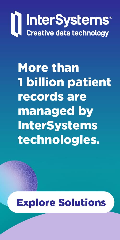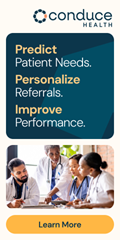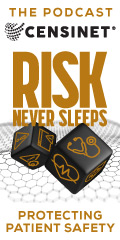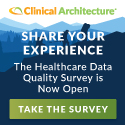Readers Write: Breaking Down Natural Language Processing and Generative AI: How It Is Most Useful to Clinicians Today
Breaking Down Natural Language Processing and Generative AI: How It Is Most Useful to Clinicians Today
By Marty Elisco
Marty Elisco, MBA is co-founder and CEO of Augintel of Northbrook, IL.

Over the last year, the term generative AI has exploded on the healthcare scene, with health and social systems trying to determine if and how they can incorporate the newest tech trend into their day-to-day practice to streamline and improve operations and ultimately improve patient care.
But most organizations have decided to take a measured approach and see how the hype plays out. They have decided to proceed thoughtfully and with diligence before viewing generative AI as the panacea to all things healthcare.
I’ve been working in health tech for 15+ years, and I’ve yet to see any generative AI applications exit the proof-of-concept phase and enter the production phase. Along similar lines, I’ve noticed that almost all articles in healthcare talk about the promise of generative AI rather than its results.
After all, when you consider the true definition of generative AI – the ability to generate language – we must ask ourselves, is this really helpful? Do clinicians really want a tool that can generate language on its own, which treads close to replacing their own clinical judgment? Remember what it is that clinicians really need — to receive the information needed to understand patients and improve the quality of care. Generative AI isn’t needed to accomplish this.
Generative AI has two steps. The first is to identify the relevant historical data. The second is the generative part, to take that historical and reconstruct it as a summary. The first part is accomplished through natural language processing to gather the relevant data. This technology is well proven, and I believe is 90% of what clinicians need.
The second part, using generative AI to summarize this data, is the remaining 10%. This is what has created all the hype. But this part is clearly not yet proven.
The distinction above between “creating new content” and “gathering relevant content” is an important one to make. I believe the latter is significantly more useful to clinicians, because the more that they are informed with relevant content, the more context they have to make decisions with the patient.
In fact, the impact of a tool that can gather content has already been realized and has been proven in clinical settings across healthcare in the following ways:
- Helping clinicians identify critical behavioral and social gaps in care, where this content is completely contained in the unstructured data.
- Understanding relevant patient history so that the clinician can make the most informed decisions.
- Identifying risks, early warning signs, and care quality issues across patient populations that may go unnoticed by the clinician.
- Understanding community-level trends that enable a health system to offer the right balances of services to the populations they serve.
I believe that the value of the above proven use cases, especially with regards to quality of care receive, generally outweigh the value of the top prospective generative AI use cases:
- Drafting patient notes for clinicians to finalize.
- Automating chatbot correspondence with patients.
- Suggesting clinical care plans.
I believe that as we head into 2024, the industry should begin to focus more heavily on the identification of actionable content instead of the creation of new content. As we close out 2023, generative AI has become part of the culture, but let’s avoid getting caught in the hype and focus on how to deliver value today.



















































































I'm so sorry to hear about how the reduction in grants impacted the trial you were applying to. It's so…